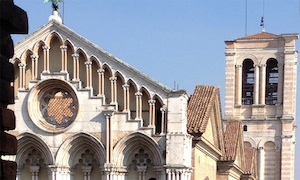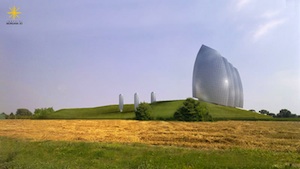Geothermal and waste energy sources
フェラーラ, City of the Renaissance, and its Po Delta, with an area of 46,712 持って, was inscribed on the World Heritage List in 1995. The humanist concept of the ‘ideal city’ came to life here in the neighbourhoods built from 1492 onwards by Biagio Rossetti according to the new principles of perspective. The completion of this project marked the birth of modern town planning and influenced its subsequent development. Today Ferrara continues in this creative spirit in such fields as energy.
Ferrara is one of the most sustainable cities of Italy and environmental issues are seriously taken into account by the Municipality. It subscribed the Aalborg chart in 1996 とで 1998 それは、ローカルアジェンダを始め 21 プロセス. It has also been awarded by Legambiente (イタリア環境庁) 最高の環境に配慮した都市のように 2001. The municipality is member of several Italian and European networks of sustainable cities (イクレイ, BigNet, and Car Free Cities) and is signatory of EU’s Covenant of Mayors.
The Geothermal Project
The use of geothermal energy as energy source starts with its discovery in 1956, during explorations for oil reservoirs at a depth of 1,000 M, 4 フェラーラの市内中心部からから北西に10km離れたロケーション. At that time the well was abandoned and only after the energy crisis of the 70’s it was taken again into account, to utilize this important energy source.
Recent geo-structural and geothermal investigations carried out by HERA Group (Energy Resources Environment Holdings) in collaboration with the University of Ferrara and the Emilia-Romagna Region, confirm the presence of geothermal reservoirs in the east part of Ferrara. Three hydrothermal systems have been identified. Each reservoir can be considered hydraulically separated from the others by aquitards that prevent significant leakages.
At the beginning of the 80’s, the Municipality of Ferrara developed a Geothermal Project in order to exploit this resource as a primary source for an urban heating system and to reduce, in a solid way, the environmental impact created by the traditional energy sources (coke, oil and methane gas, etc…).
最初は, 地熱流体 (お湯, ca 100°C) の深さから汲み上げられる 1,000 表面へのM; その後、熱水は、加熱システムに熱エネルギーを伝達する. ついに, それは地盤安定性を確保するために、下層に再導入される.
作品は年に始まった 1987 とで 1990 最初の建物は地区暖房ネットワークに接続されていた. で 1993 固体廃棄物の熱破壊のCHPプラントが建設されました, 第2ウェルは、年にオープンしている間に 1995. で 1999 CHPプラントで発生した蒸気が供給されるターボオルタネータがインストールされました. At the end of 2010 the installed geothermal power was about 23 MWt.
統合エネルギーシステム
今, フェラーラのネットワークは、いわゆる "統合エネルギーシステム"が供給される, because the energy from the Waste Treatment Plant was added to the geothermal source. それが大幅なコスト削減を持って、CO2排出量を削減することができますので、このシステムは、従来のものより環境や経済的利益を持っている.
The system incorporates geothermal sources, CHP (combined heat and power) units installed in the solid waste processing plants, together with boilers running on biogas and used as backup systems. The urban heating network supplies the equivalent of 22,000 housing units, mostly in private and public buildings.
But the future is more promising. The proposed new Renewable Energy Hub will allow increasing this figure to 37,000 housing units, meaning that the district heating would cover the 40% of households. Another new development is that solar thermal will be incorporated to geothermal, with the capacity to convert solar energy into thermal energy for heating with a power of 1 MWt.
The energy mix will reach 90% of renewables. With the new Hub, 56.4% of the energy in the grid will come from geothermal sources, 34.3% from the Cassana incinerator, exploiting energy from waste and agricultural biomass, 0.3% from solar thermal, and only 9% from natural gas, the only non-renewable source.
Lessons learned and replicability
The District Heating System of Ferrara represents one of the most important examples of ‘Integrated Energy System’ that will be further increased by the future development. その高いエネルギー効率のために、このシステムは、いくつかの問題が必要な建設サイズに関連することができるが、譲渡は非常に賢明であると考えられている, 市場関連の, 経済·技術的な理由.


















